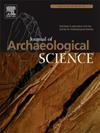Assessing the impact of Nile water level fluctuations on the structural stability of the Philae temples in Aswan, Egypt
IF 2.5
1区 地球科学
Q1 ANTHROPOLOGY
引用次数: 0
Abstract
The ancient Egyptian temples at the Philae UNESCO World Heritage Site in Aswan face conservation challenges due to fluctuating water levels, which threaten their building material resistance. Following a summary review of the hydrological changes to the natural responses of the Nile caused by the construction of the Aswan dam, our research employs a novel approach, combining remote sensing data analysis, literature review, fieldwork, and multiple high-specification materials analyses, to assess the impact of these changes on the temples in Philae. The new data permit the identification of the most at-risk areas and inform the long-term monitoring and conservation of Philae. Our approach enhances understanding of the causes and effects of building material decay and underscores the urgent need for conservation strategies to mitigate ongoing water-induced deterioration. The research highlights the impact of human-induced hydrological changes, offering a case study that informs future climate change effects. It is clear that tough decisions will be required for the long term heritage conservation of the Philae temples in the face of modern infrastructural developments and climate change, and that cultural heritage management guidelines before and after dam construction is urgently required. The issues identified, are not unique to the Philae Temples so the results and recommendations are relevant to other World Heritage sites that are currently facing similar environmental and conservation challenges.
评估尼罗河水位波动对埃及阿斯旺菲莱神庙结构稳定性的影响
位于阿斯旺的菲莱联合国教科文组织世界遗产的古埃及神庙面临着保护挑战,因为水位波动威胁到它们的建筑材料的抵抗力。在总结了阿斯旺大坝建设对尼罗河自然反应的水文变化之后,我们的研究采用了一种新颖的方法,结合遥感数据分析、文献综述、实地调查和多种高规格材料分析,来评估这些变化对菲莱神庙的影响。新的数据可以确定最危险的地区,并为“菲莱”的长期监测和保护提供信息。我们的方法增强了对建筑材料腐烂的原因和影响的理解,并强调了迫切需要采取保护策略来减轻持续的水引起的恶化。这项研究强调了人类引起的水文变化的影响,提供了一个为未来气候变化影响提供信息的案例研究。显然,面对现代基础设施的发展和气候变化,菲莱神庙的长期遗产保护需要做出艰难的决定,迫切需要水坝建设前后的文化遗产管理指南。所发现的问题并不是菲莱神庙所独有的,因此研究结果和建议与目前面临类似环境和保护挑战的其他世界遗产地有关。
本文章由计算机程序翻译,如有差异,请以英文原文为准。
求助全文
约1分钟内获得全文
求助全文
来源期刊

Journal of Archaeological Science
地学-地球科学综合
CiteScore
6.10
自引率
7.10%
发文量
112
审稿时长
49 days
期刊介绍:
The Journal of Archaeological Science is aimed at archaeologists and scientists with particular interests in advancing the development and application of scientific techniques and methodologies to all areas of archaeology. This established monthly journal publishes focus articles, original research papers and major review articles, of wide archaeological significance. The journal provides an international forum for archaeologists and scientists from widely different scientific backgrounds who share a common interest in developing and applying scientific methods to inform major debates through improving the quality and reliability of scientific information derived from archaeological research.
 求助内容:
求助内容: 应助结果提醒方式:
应助结果提醒方式:


